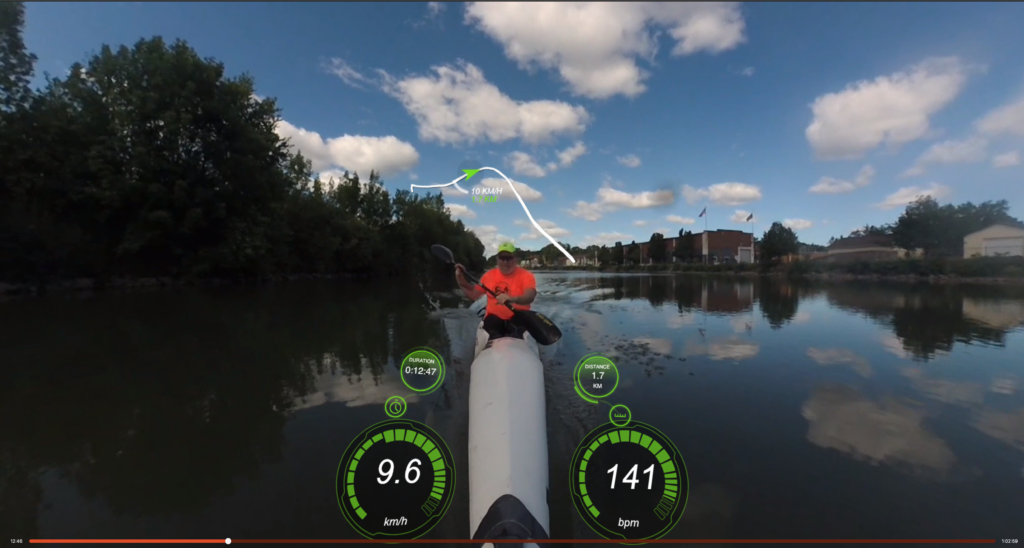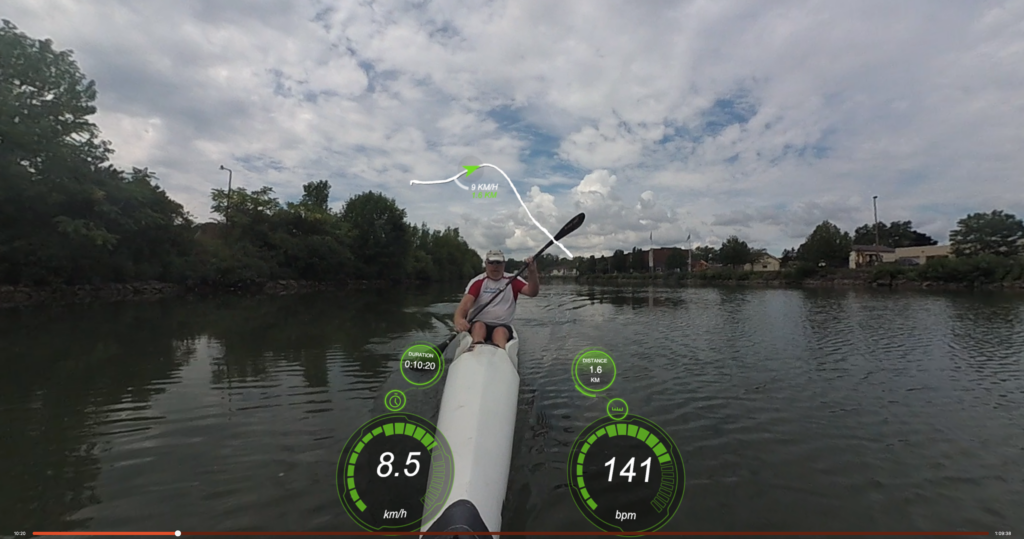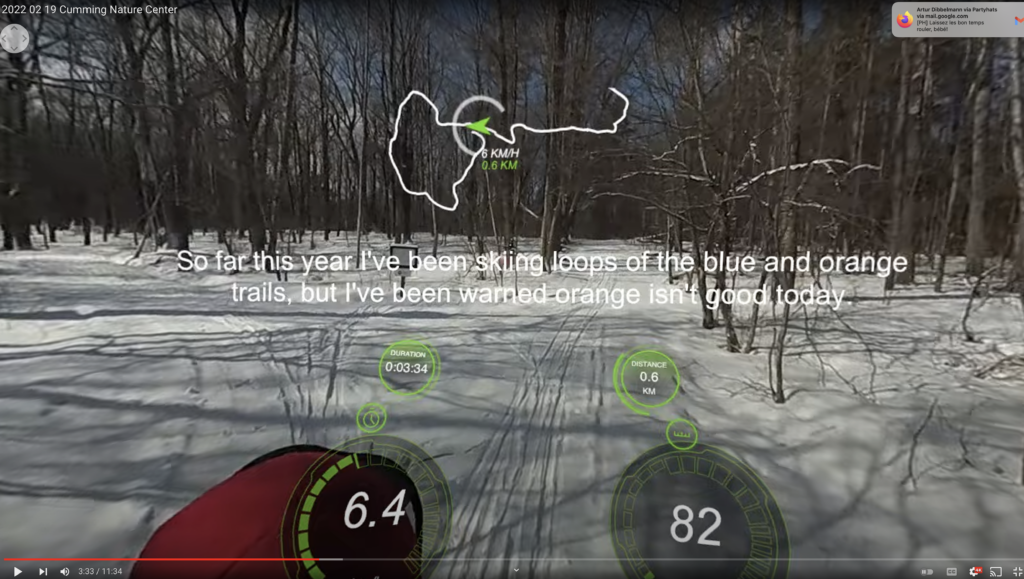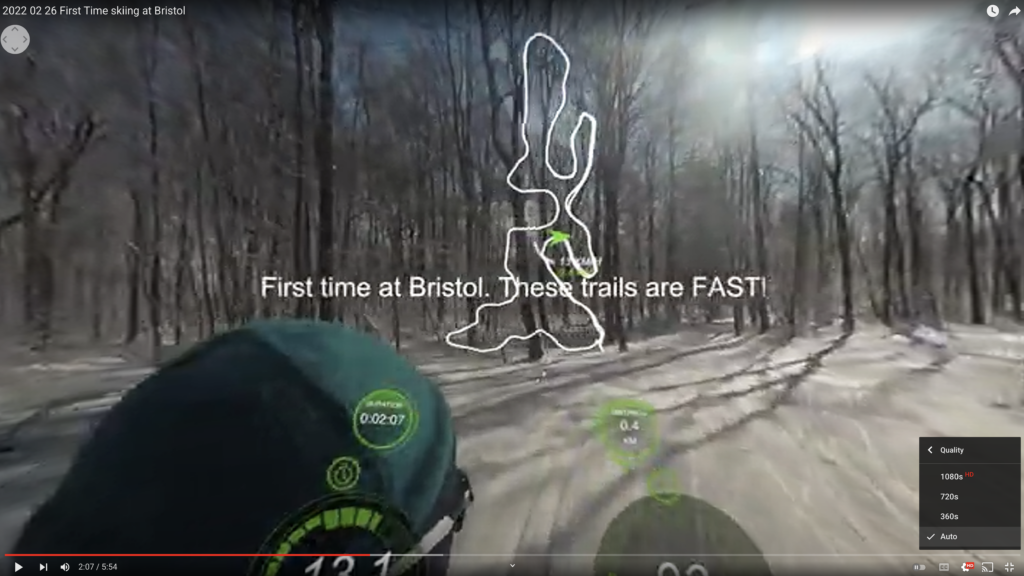Last weekend (May 9-11) we did an RV trip to the Lake Placid/Saranac Lake area. Originally I’d planned to just do it on my own, because my main purpose for doing it was so I could shoot some drone footage at the ‘Round The Mountain Canoe/Kayak Race. They should probably rename that, because it’s not just canoes and kayaks, it’s also pack boats (a canoe-like boat with a lot of tumblehome so it’s paddled with a kayak paddle – most of them are made by Placid Boat Works) and guide boats (a bigger boat, rowed by one person, and sometimes with a person in the stern with a canoe paddle, based on the boats that Adirondak guides used a hundred years ago) and stand up paddle boards. I thought Vicki would be bored if I dragged her along but not only did she come on the trip, but she came to the race as well.
Anyway, we had a rainy drive up on Friday. RVLife once again tried to kill us by trying to route us via an illegal U-turn on a divided highway with almost no median between the directions, just a gap in the fence and a “No U-turns except emergency vehicles” sign. It’s funny, because mere minutes before this we passed an exit that I said “I normally go off here when using Google or Apple Maps, I wonder why RVLife is having us miss it?”

We arrived at the campground just a few minutes late for a normal check in. Some of the KOA people were still hanging around the late check in desk and handed us our mirror tag and camp map with the route to our campsite helpfully drawn in. It was a pull-through site, full service. Something we haven’t had yet this year. I pulled through, and checked our trailer location and declared it in proper position, so we set about leveling and unhitching and putting down the jacks and out the slides. But when it came time to hook up the water service, I discovered that the thing I’d thought was the water spigot was just some other piece of infrastructure, and the spigot was actually on the backside of the electrical post. And wouldn’t you know it, the water hose ended up being 4 feet short. Oh well, I thought, it’s a pain but I guess we’ll have to hitch up again and move the trailer back 4 feet.
That’s when disaster struck. The front set of jacks wouldn’t retract. The relay made a click, but there was no motor sound. So now we’ve got two problems, and no easy way to fix them. The Facebook technical guru Steve was also camping, and both of us had intermittent 1 dot of signal. But he said to try resetting everything, but that didn’t work. Also it turned out that the manual retraction of the jacks uses a proprietary connection, and evidently we didn’t get one with our trailer, or misplaced it. So we decided that we had to get some more drinking water hose.
We drove into Lake Placid and Saranac Lake, and didn’t find any place selling garden hose. We did stop at a grocery store and bought some bottled water to tide us through the night, and we just didn’t do any dishes and went to the camp toilets when necessary. Normally I like to travel with 5-10 gallons or so in the fresh water tank, but I forgot to fill it this time.
The rain finally stopped at some point in the night, which made me happy about the possibilities of being able to fly my drones, although the race has a history of dawning sunny and light winds, and it whipping up to a gale and rain just a few minutes before start time.
Next morning, the KOA camp store opened at 9, and they had drinking water hose. So we got the trailer hooked up and were able to flush toilets and wash dishes again. That was one burden off my mind. Also got to try the new Rhino Adaptor Pro – I’d been searching all over the internet for one of these things after they got announced this spring, and finally got one last week by driving 40 minutes away to a Walmart that had two of them. It’s everything I’d hoped – it makes a good water and smell tight seal with the sewage connection so you don’t have to pile rocks or sandbags to keep the “stinky slinky” from slipping out.
Unfortunately we didn’t pay attention to the time and we ended up leaving the campground just slightly too late to make the start of the race, so I headed straight to the one and only place where the race goes under a road bridge, on Rte 3 between First Pond and Second Pond. We parked up there and I trudged into the woods and set up to launch and retrieve my drone there. And really none too early, because the first paddlers showed up about 15-20 minutes later.
Uncharacteristically for ‘Round The Mountain, the weather stayed good for the whole race, with very little wind and no rain. It was overcast, which is a slight bummer because I love the video you get when it’s blue skies and sunny.
Like I said, I set up kind of in the wood where I had a good view over First Pond, but there was somebody else with a drone on or near the bridge, and sometimes I got thrown off by the sound of a drone coming from my right when I knew my drone was to my left. I don’t think I’ve ever encountered that before.
I spent nearly an hour videoing there, until I saw what I assumed was a sweeper boat. In my racing days, I was always up near the pointy end of the race, and I was pretty much laser focused on one or two other kayaks who I’d consider rivals, and every other boat out there was just an obstacle to pass or a potential wake to try to ride. So I was kind of amazed how many boats there were in the race, especially how many pack boats.
After that, we drove down to the finish and I did some more videoing there. I didn’t stay to the end there. But I got another half hour or so of video, and then packed up my drone. Met some old friends who were in the race, and invited them out to dinner.
Before dinner we went back to the campsite to rest up and change. I also spend some time working on the level problem. Did some googling, and found a document about setting up the In-Command system, which controls all the fancy stuff on the trailer, like the lights and the jacks and the furnace. And it described a way of manually extending and retracting the levels using a rotary switch and button on the In-Command circuit board. What I didn’t realize was that this method still used the relay, but sometimes ignorance is bliss because on the second attempt I got this button to actually retract the front jacks. Just after I did that, Steve came back on-line long enough to tell me that my problem was probably a relay, and the In-Command circuit board has a couple of spare relays below the in-use relays. I swapped the relay and now I could extend and retract the jacks with the app, and suddenly I wasn’t worried about anything any more.
We went out for dinner with Roger and Jim and Kim. It was a new brew-pub place in Saranac Lake and very popular, so there was a long wait to get seated – but interestingly enough, the wait list was managed in the Yelp app which told you how many people were ahead of you and your expected seating time. The food was excellent, and the beers on tap were pretty good, although Jim didn’t like his and switched to a Bud Lite. Can’t fault a guy for knowing what he likes, but he was pretty annoyed that they didn’t comp him the beer he didn’t like and only drank a few sips from.
Next morning was blue skies and sunshine, although the wind was a little higher. I was tempted to send the drone up to get pictures of the campground, but I figured I had enough video editing to do and I didn’t need to do any more. Plus Vicki had taken a bunch of pictures.
The drive home was also uneventful and more pleasant than the drive out. And RVLife didn’t try to kill us this time.
It’s now Friday, and in that time I’ve only managed to edit the First Pond footage. I still have the finish line footage to deal with. I was going to make one long video but I decided it had been long enough so I duplicated the project and cut off the unedited second part and uploaded that to YouTube. It isn’t terrible, if I do say so myself.




